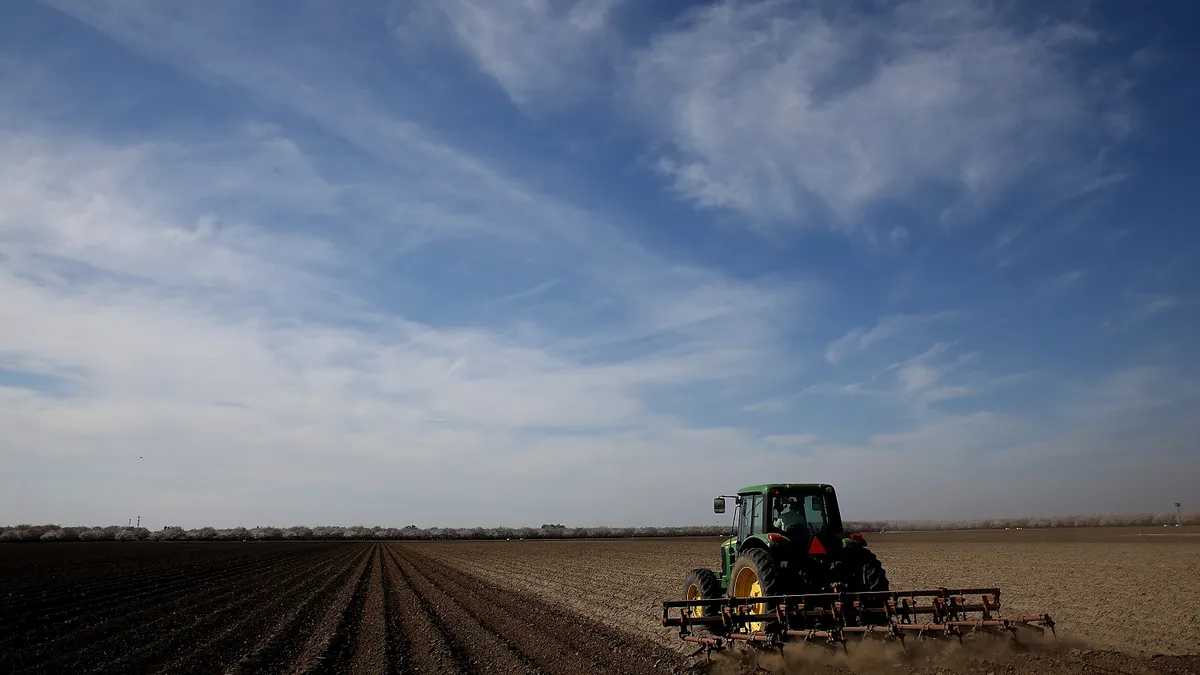Dive Brief:
-
The Federal Reserve’s battle against inflation and a surging U.S. dollar has taken a disproportionate toll on agriculture, manufacturing and other rural industries, according to the latest report from CoBank.
-
The one-two punch of high borrowing costs and a strong dollar makes U.S. exports more expensive, hurting the nation’s trade opportunities, economists said in a quarterly report.
-
After 20 months of hikes, interest rates have reached highs not seen since 2007, sparking debate about whether the mechanism for defeating one of the worst bouts of inflation could actually trigger a recession, experts say. Meanwhile, agriculture commodities have generally struggled this year, creating further headwinds for producers.
Dive Insight:
Recent disruptive geopolitical and economic events, such as the pandemic, the Russia-Ukraine war and inflationary pressures, have resulted in an irregular situation where commodity prices and the U.S. dollar both moved upward in tandem, according to CoBank.
But those events are fading as market drivers. Economists said the fundamental inverse relationship between commodities and the dollar has largely returned.
“The challenge for agriculture and other rural industries that rely heavily on global markets is their export partners simply can’t afford to buy U.S. products,” Rob Fox, director of CoBank’s Knowledge Exchange, said in a statement. “When you combine the loss of exports with a general slowdown in the U.S. economy, it’s a double whammy for many businesses operating in rural America.”
U.S. grains and oilseeds are facing major headwinds as low Mississippi River levels prevent barges from shipping commodities in the middle of harvest season. This, combined with robust export competition from Brazil and Russia, is slowing corn and wheat exports, according to the report. China’s disinterest in soybeans is affecting export movement as well, but domestic interest is strengthening as the market fills growing demand for renewable diesel.
A strong dollar is also pressuring meat and poultry exports in parts of the world, except for Mexico, where the peso has largely kept pace with the dollar through the first six months of the year. Total U.S. meat and poultry export volume to Mexico is up 10% over last year, driven by purchases of broiler chicken, according to the report.
Looking ahead, Federal Reserve Vice Chair Philip Jefferson said at a recent business meeting in Dallas that the U.S. economy and labor market may be running too hot to achieve further disinflation as oil prices continue to rise. He also is watching for a potential slowdown in foreign economic growth as China and Europe feel slowdowns in real estate and manufacturing.
“We are still learning about the full effect of our policy tightening in this post-pandemic cycle,” Jefferson said at the 65th Annual Meeting of the National Association for Business Economics on Monday.











